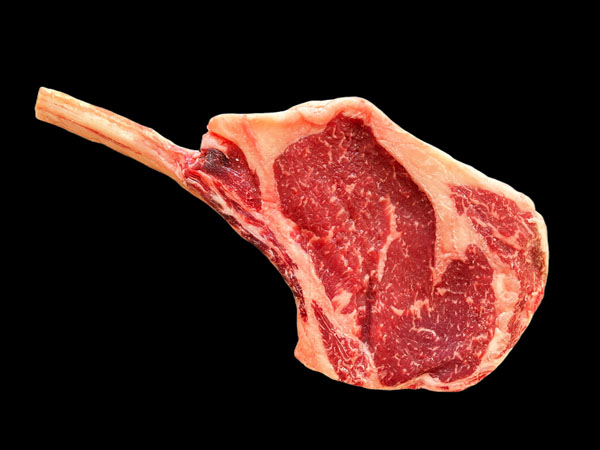The ribeye filet is everything great about a ribeye steak packed into one cut without the outer fat. It’s perfect for anyone who wants the best part of the steak and nothing else. In this article, I’ll explain what makes the ribeye filet so special, where it comes from on the cow, the different names it’s known by, and more.
What is a Ribeye Filet?
The ribeye filet is the central part of a ribeye steak, known as the “eye of the ribeye” or the longissimus dorsi muscle. It has less outer fat than a regular ribeye but has plenty of marbling, giving it great flavor. It’s similar in shape to a filet mignon but has a different taste and texture. Ribeye filet is one of the most flavorful cuts of beef, but it’s also one of the most expensive.
In the photo below, you can see the different muscles in a ribeye steak. The ribeye filet is the longissimus dorsi, the muscle in the middle of the steak.

What Are the Other Names for Ribeye Filet?
Here are the most popular other names for the ribeye filet in the United States:
- Ribeye Petite Steak,
- Saratoga Steak,
- Center-Cut Filet of Ribeye,
- Smaller Ribeye Steak,
- Eye of Ribeye,
- Rib Steak Filet,
- Beef Filet (from Rib Section),
- Longissimus Dorsi Filet.
Where Does a Ribeye Filet Come From on a Cow?
The ribeye filet comes from the rib primal, located between the chuck and loin sections of the cow. It’s cut from the longissimus dorsi muscle, which butchers carefully trim from the center of a ribeye steak or ribeye roll.

What Does Ribeye Filet Taste Like?
Ribeye filet, from the longissimus dorsi muscle, is packed with flavor thanks to its heavy marbling. This cut is naturally tender and juicy, making it a favorite for steak lovers. The taste can change a bit depending on the grade of the meat, how it’s cooked, and the doneness, but it’s always rich and beefy. It’s especially juicy and tender when cooked to medium-rare, with almost a melt-in-your-mouth texture that’s hard to beat.
What’s the Difference Between Ribeye Filet and Ribeye Steak?
The main difference between ribeye filet and ribeye steak is how butchers cut them. A ribeye steak includes three to four muscles depending on the specific cut: the spinalis dorsi, longissimus dorsi, complexus, and sometimes the longissimus costarum. On the other hand, a ribeye filet is just the longissimus dorsi muscle (eye of the ribeye), which is the center part of the steak. Sometimes, it may also have a small portion of the longissimus costarum, but it’s mostly just the longissimus dorsi.
The big advantage of the ribeye filet is that it doesn’t have the outer fat common in a ribeye steak. It’s a tender, flavorful cut you can enjoy without worrying about trimming fat before or after cooking. It’s similar to a filet mignon, ready to cook and eat without much fuss.
What Are the Best Methods for Cooking Ribeye Filet?
Here are the best cooking methods for ribeye filet:
- Pan-searing only: This is a quick and simple way to cook a ribeye filet, giving it a beautiful crust while keeping the inside juicy. It’s perfect for those who enjoy high-heat cooking and want fast results.
- Grilling: It’s a great method to infuse smoky flavor into the ribeye filet. This method is ideal for those who appreciate the taste and aroma that only a grill can provide.
- Pan-searing and Oven-Finishing: This method gives you more control over the steak’s doneness, especially if you like it cooked to perfection. It involves cooking the ribeye filet on the stovetop and finishing it in the oven.
- Sous Vide and Sear: Sous vide is a simple and reliable way to cook a ribeye filet perfectly every time. It’s easy to use, even for beginners, and gives you consistent, reliable results without the guesswork.
- Reverse searing: Gives you even cooking and a perfect crust. Start by cooking the ribeye filet slowly at a low temperature, then finish it with a quick, high-heat sear. It’s an easy way to get the doneness you want.






